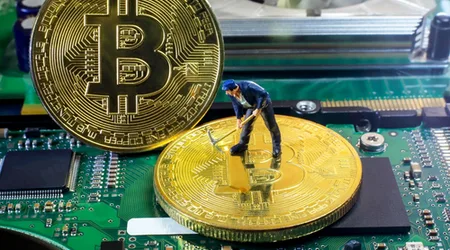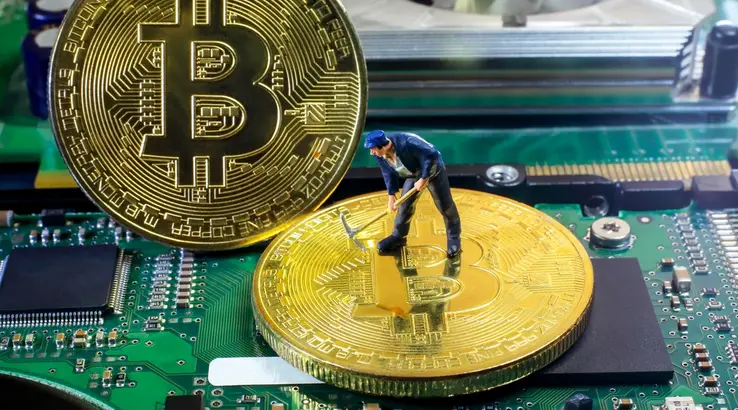Blockchain Sybil resistance: Searching for the perfect waste of resources


The sole purpose of Sybil resistance mechanisms is to incur costs. But what makes a good waste of resources?
Sybil attacks are named after the subject of Sybil, a book about a woman with dissociative identity disorder and her multiple personalities. As the name suggests, a Sybil attack is when someone creates multiple "accounts" to exert more influence over a system.
Anytime someone creates social media alter egos to win arguments against themselves in public or tries to influences dialogue with an army of bots, they're arguably carrying out a Sybil attack of sorts.
But with cryptocurrency, there are now direct financial incentives to carrying out this type of attack where possible, which means Sybil resistance is an essential element of any public blockchain.
Unfortunately, Sybil resistance methods are largely characterised by their stark downsides.
The proof
Sybil resistance is achieved through the use of some kind of tangible, finite resource. By requiring participants to pay some kind of cost, you can prevent them from creating enough Sybils to take over the network.
In the Bitcoin blockchain, Sybil resistance is achieved by requiring participants to hash inputs with the SHA-256 algorithm before they can take any kind of active control over the blockchain. Hashing isn't free. It requires time, equipment and energy, which creates the required cost.
In all proof-of-work blockchains, the Sybil resistance "resource" is the equipment and energy required to hash those inputs.
This method also comes with some downsides as you'd expect from a system whose sole purpose is to incur costs.
There's no real limit on how much energy a proof-of-work network can consume, and this system's economic incentives tend toward centralisation under the most efficient manufacturer of the most efficient equipment.
These downsides have kicked off a search for alternative Sybil resistance mechanisms.
Immaterial sciences
Many of these searches have led to intangible "Sybil resources" to replace the physical hashing machines used in proof of work.
Proof of stake, for example, uses a blockchain's own cryptocurrency as that resource, proof of authority uses registration as a US public notary as its finite resource and many projects are exploring ways of turning reputation scores into the requisite Sybil resistance resource.
But the use of intangible resources incurs new downsides. One commonly-made point is that intangible resources can usually be transferred instantly, and when you find a suitable-looking intangible Sybil resistance resource (valuable, finite, publicly accessible, not dependent on third parties, works regardless of network size, etc), you need a separate, equally-reliable Sybil resistance mechanism to prevent someone from secretly hoarding it.
And if you already have that, why do you need a new one?
Formulating security assumptions is also much more complex when using intangible Sybil resistance resources. In proof of stake, for example, how do you account for developments like the rise of staking as a service, the spread of crypto custodial services, the potential for cryptocurrency exchange consolidation and dapp token use?
In this respect, tangible resources can be quite useful. The inherent inefficiencies of physical goods, such as the slowness and cost of transporting them, the need for raw materials to make them and their limited working lifespans, arguably adds an additional degree of decentralisation and helps ensure more predictable distribution of Sybil resistance resources.
It's a material world
The search for an equally tangible but less-wasteful Sybil resistance resource has led some developers to hard-drive space, with varying degrees of success.
Spacemesh is one such project, which lets users deliberately "waste" their hard-drive space in exchange for permission to submit blocks to the network, with a system it calls "proof of space time" (PoST).
"Each user decides how much free space from one of their hard-drives they want to commit to Spacemesh. For example, 250GB or 1TB. The Spacemesh App fills this space with cryptographic data in a one-time setup process, after which it can no longer be used to save files," explains Spacemesh chief product officer Aviv Eyal. "While the space is committed, the user is eligible to submit blocks of transactions to the Spacemesh, for which he will earn coin rewards."
The number of blocks submitted, and therefore the user's rewards, are proportionate to the amount of hard-drive space they decide to sacrifice in the name of cryptocurrency.
"PoST can be applied to any task where a solution to the Sybil problem is required," Eyal says. "PoST basically associates a cost of a real-world resource with a digital identity, making the creation of many identities costly."
Unlike proof of work, the energy consumption of PoST is mostly limited to the initial setup, he says, when the user first dedicates a set amount of hard-drive space to the system. It's also designed to work equivalently on all hard drives that meet basic speed requirements, so one's proportion of Sybil resources is mostly dependent on space, rather than speed.
Taken to logical extremes
Based on the precedent set by proof of work, which managed to significantly drive demand for GPUs, it's reasonable to hypothesise that people would continually allocate as much hard-drive space to PoST as possible as long as it's profitable to do so.
The hard disk market is bigger than the GPU market though. About as many hard disks are sold each month as GPUs are sold each year.
"In order for hard drive prices to rise as a result of PoST, it would have to drive up demand by a significant amount," Eyal muses. "But even if a million people buy new drives in order to use PoST, we are talking about a very minor 0.3% increase in demand."
"Even if we assume that many millions of additional hard drives will be purchased just for PoST, this is just as likely to result in an industry-wide surge in supply on account of increased competition between hard-drive makers," he points out. "We know that this capability exists because, back in 2010, about 54 million hard drives were sold globally every month – about 24 million more than at present."
To help ease the risk of domination by whales with enormous amounts of hard-drive space to spare, the Spacemesh system is also designed to pay out more frequently to ensure relatively consistent awards even for smaller "miners". Theoretically, this will lead to a longer-tail of smaller miners, Eyal says, to further reduce the risk of Sybil resources consolidating dangerously.
But it's still early days in Sybil resistance. Formal PoST security proofs have yet to be completed, and Spacemesh is still working on launching a long-running open testnet to audit the platform and get a sense of how well it works.
But it's only in long-term live use that we can really see the consequences, both intentional and unintentional, of different systems. And so the search continues.
Also watch
Disclosure: The author holds BNB and BTC at the time of writing.
Latest cryptocurrency news
Picture: Shutterstock
